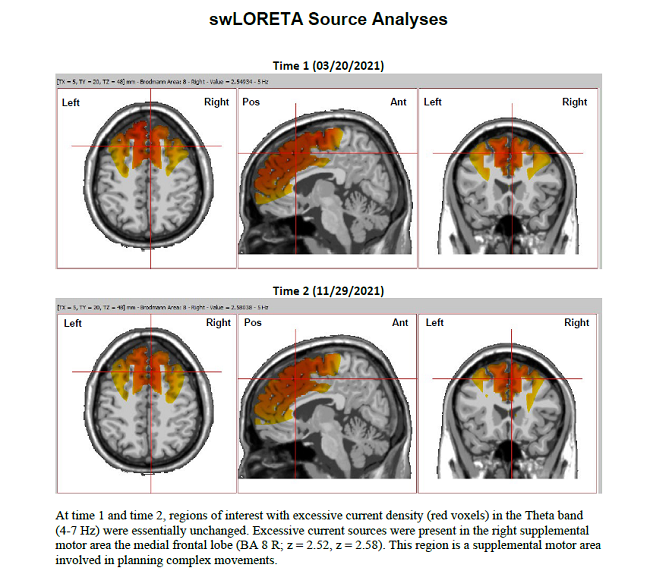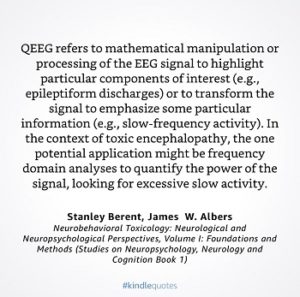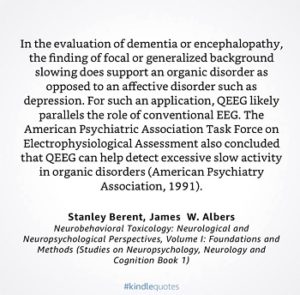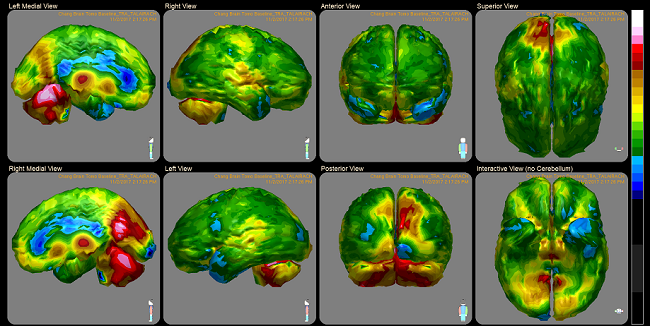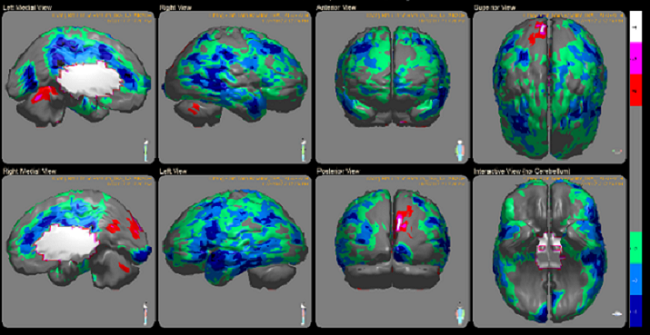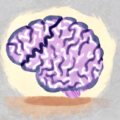Polypharmacy and Iatrogenic Injury: More Common Than Recognized
My life should never have taken the catastrophic negative turns that it did. I am well educated, was a minivan driving soccer mom and a devoted wife. I enjoyed a successful career as a pediatric audiologist working in a variety of fast-paced medical settings. I was well liked, a loyal friend to many and an active member of my community. My very vibrant and blessed life was obliterated by a perverse cascade of errors from a broken medical system. This affected my loved one’s lives as profoundly as mine. Had medical providers looked for, and addressed root causes, I’d still be driving that minivan.
It has taken me a long time and immense research to piece together and understand what happened to me. I would like to share my story for whatever understanding can do to ease the pain, and for whatever help it could give to prevent others from experiencing what our family did. First and foremost, however, I want my husband and children to understand the truth of what happened to me.
I did not suddenly develop perverse mental illness out of thin air. I was a victim of repeated misdiagnoses, unrecognized adverse drug reactions/drug toxicity and profound polypharmacy.
This is described in the literature as “medication induced iatrogenic chronic health syndrome, or iatrogenic injury.” It is more common than one would think and it unnecessarily destroys lives.
The First Hit: Toxic Mold Effects Misdiagnosed as Depression
The circumstances which led to my catastrophic outcome are cumulative. It was no one thing, but several hits to my system.
In the late 1990’s, my husband and I were a happy, newly married couple enjoying a carefree dual income lifestyle. We had successful and fulfilling careers, great friends, and loved life; the world was our oyster. Despite all this, however, we both found ourselves incredibly tired all the time and experienced frequent brain fog. My husband also began having recurrent sinus infections. I developed unrelenting headaches, fibromyalgia, dry eyes, vision issues, G.I. disturbance, frequent urination, skin rashes, excessive thirst, irregular menstruation, and disorientation – I was getting lost going to familiar places.
When seeking medical attention for this cluster of symptoms, we were both told we were suffering from mild depression and were prescribed an anti-depressant (SSRI). Neither one of us actually felt “depressed,” though. Yet, we trusted our doctors knew best and so took the anti-depressant medication as prescribed.
It’s absurd that we were given a psychiatric diagnosis given the physiologic symptoms we were experiencing. More unbelievable is that we did not even question the doctor. I would later learn that the constellation of symptoms we had is consistent with toxic mold illness, a subcategory of biotoxin illness known as Chronic Inflammatory Reactive Syndrome (CIRS). I was, in fact, subsequently diagnosed with CIRS.
We unknowingly lived in a home with hidden toxic mold, where up to two feet of water collected in the crawlspace underneath the home seasonally every winter. The root cause of our symptoms which doctors diagnosed as “depression” was completely missed. We did not need antidepressant medication. We needed out of our water damaged home and treatment for mold illness/CIRS. Instead, we got put on an unnecessary neurotoxic medication with serious adverse health risks including the effects “medication spellbinding.”
The Second Hit: IVF Treatments Lupron and Synarel
When we decided to start our family, I experienced infertility. My husband and I utilized in vitro fertilization (IVF) to conceive our two children. During this process many different pharmaceuticals are prescribed for women. The doctors assured us the medications were all “safe”.
I was given Lupron and Synarel as part of my IVF treatment protocols. Both are antineoplastic agents, meaning they are cancer chemotherapy drugs, used off label for fertility treatment. Like all antineoplastics, they are harmful to both cancerous and non-cancerous cells — particularly to pregnant women and developing fetuses. It’s incredibly scary that it is actually used for conception, isn’t it? They are neurotoxic and can induce systemic damage-CNS, connective tissue, mitochondrial, immune, etc.; damage that unfolds over time.
Equally disturbing is that I was advised to stay on an antidepressant throughout pregnancy for a depressive disorder, it turns out, I never had. When I requested to be tapered off of the SSRI before attempting to achieve pregnancy, I was told that the risk of harm to the baby of a mother with untreated depression was greater than any potential adverse effects of in utero exposure to an anti-depressant medication. Really? This made absolutely no sense to me in my circumstance; the only qualifier for my diagnosis of mild depression was unrelenting fatigue. Yet, the doctor instilled such terror in me that I would be irrevocably harming my child if I did not not stay on an antidepressant during pregnancy, I reluctantly followed his advice. Prenatal exposure to an SSRI can be damaging to a developing brain and nervous system. Both my children were born with severe nervous system dysregulation and have developmental and immunological issues.
Toxic mold exposure and SSRIs can both cause various hormonal issues. My infertility was due to anovulatory cycles likely induced by the antidepressants that were inappropriately prescribed for the toxic mold. I had also been on hormonal birth control for many years prior to our attempts at conception. Suffice it to say, I was not healthy. Despite my compromised health, the fertility doctors added more toxic chemicals to my body to initiate conception.
The Third Hit: Fluoroquinolones
My children were both born via Cesarean section-my daughter due to vasa previa, my son due to failed VBAC, failure to descend. In each instance, IV Cipro (drug class fluoroquinolone) was given prophylactically.
“Fluoroquinolones are associated with prolonged (up to months or years), serious, disabling and potentially irreversible drug reactions affecting several, sometimes multiple, systems, organ classes and senses”. Fluoroquinolone toxicity can lead to a subsequent systemic health cascade.
Within a couple days after receiving IV Cipro, I experienced acute onset of significant arm weakness and severe wrist pain, requiring the use of wrist guards for several months. I had difficulty physically caring for my children after their birth because of this. I also experienced photosensitivity, hyperacusis, drenching night sweats, constipation/G.I., hair loss, hyperactivity, brain fog, short term memory issues and fatigue. Additionally, I had irritability, emotional blunting, and personality changes after my son’s C-section. All of these symptoms were much more severe after my son’s delivery and they did not ever resolve completely.
After my son’s birth, I was prescribed multiple consecutive courses of oral Levaquin plus steroids for persistent pneumonia I developed during the second trimester of my pregnancy with him. The concomitant use of steroids with fluoroquinolones exponentially magnifies the damage to the body.
Levaquin and Cipro belong to the class of medication known as fluoroquinolones. They are essentially chemotherapy drugs, that negatively impact the immune system, CNS/ANS/PNS, alter DNA, cause mitochondrial and connective tissue damage as well as severe neuropsychiatric/cognitive issues.
“Fluoroquinolone adverse-reactions are categorically different from allergic reactions, rather, fluoroquinolone toxicity is a syndrome of multi-symptom, chronic illness that does not go away when administration of the drug has stopped. Fluoroquinolone adverse-reactions are similar in symptoms and scope to autoimmune diseases, fibromyalgia, ME/CFS, POTS, psychiatric illnesses, neurodegenerative diseases (like ALS and Parkinson’s), and other chronic, multi-symptom, illnesses that involve multiple bodily symptoms. Like many of those diseases, fluoroquinolones adversely affect gut health, mitochondrial health, liver health, neurotransmitter balance, mineral homeostasis, hormones, and more. Fluoroquinolone toxicity is a multi-symptom, chronic, syndrome, that, for many, is incurable.”
Following the fluoroquinolone exposures, my health declined significantly and systemically over the next several years. Extreme fatigue, fibromyalgia, persistent headache, head pressure, G.I. issues, recurrent infections, cognitive issues, muscle wasting and visual disturbances. I also began to develop multiple chemical sensitivities, food sensitivities and electro-hypersensitivity. I have been told by physicians and researchers this is all consistent with fluoroquinolone toxicity which can lead to a progressive health cascade. However, this went unrecognized and, instead I was given large doses of antidepressants which only exacerbated my declining status.
The Fourth Hit: Multiple Viral and Fungal Infections and More Medications
Next, I was diagnosed via lab testing with neurological Lyme disease, bartonella, erichliosis, parasitosis, babesia, CIRS, systemic fungal infections, Epstein Barr and other chronic viral infections (2010). As my health had been decreasing for many years, I was relieved to finally have what doctors thought was the “root,” and I was eager to address it. I was a compliant patient and followed their complex protocols. An utterly insane amount of pharmaceuticals were given over the next six years (listed at the bottom of this post) for treatment, including more rounds of fluoroquinolones (Levaquin, Avelox) and their “second cousins” -Mepron, Malarone, Flagyl. The years of aggressive treatment proved disastrous.
Very well-intentioned doctors missed the pre-existing fluoroquinolone and SSRI toxicity. No regard was taken for the growing burden on organs, most notably the liver and brain. My G.I. system was decimated by dozens of antibiotics. Aggressive “Lyme” treatment involving years of polypharmacy only served to poison me more, further impairing my CNS and immune system. My health status continued to decline.
The Fifth Hit: Sedatives and Anticonvulsants to Quiet the Immune System
After years of Lyme treatment and with medication toxicity already through the roof, the next approach was to add Ativan, a benzodiazepine, and Gabapentin, an anticonvulsant. This was to calm mast cell activation and aide intractable insomnia that had developed. Both were used for off label purposes. Fluoroquinolone exposure can trigger mast cell activation. Toxic mold exposure can also trigger mast cell activation.
I suffered an immediate adverse drug reaction to Gabapentin in February 2015. Within the first day of beginning this medication my handwriting changed. I could not walk straight and began dropping things. I had an obvious and immediate decrease in executive function and short-term memory, along with hyperactivity, twiddling my fingers and other symptoms that I would later learn fall under the umbrella condition called akathisia. According to the Akathisia Alliance for Research and Advocacy:
“[Akathisia] …is an extremely distressing neuropsychiatric syndrome with symptoms including severe agitation, inability to remain still and an overwhelming sense of terror implicated in many suicides and acts of violence. It is a medication side effect.”
I reported all this to my doctor who instructed me to stay on the medication and that my body would “adjust with time”. These were not harmless “side effects” that would fade. This was a serious adverse drug reaction which went unrecognized as such and led to more polypharmacy.
Progressing Neurotoxicity: Let’s Up the Doses of the Contributing Medications
Over the next several months, my cognition and proprioception continued to rapidly decline. Additionally, I experienced the onset of deeply troubling new symptoms – an extreme fear to be alone, intense inner restlessness, confusion, blurry vision, severe headache, hand tremor, worsening insomnia, terror, and derealization/ depersonalization. Repeated changes were made to my Lyme treatment protocol with the assumption that these new symptoms and decline were related to that chronic health condition. The gabapentin and ativan doses were also increased. Changes were made to the SSRI. The adverse drug reaction and increasing toxicity was missed completely and, in fact, additional pharmacy worsened it.
Something was very, very wrong; I just kept declining. In no way did this feel like it was simply an exacerbation of Lyme. By the fall of 2015, things had deteriorated to the point to where I had to stop driving for safety reasons as my vision and motor skills had become too impaired. We had to hire household help and childcare because I had become essentially non-functional. I was acutely aware that my decline was negatively impacting my children and I wanted to make sure there was a capable adult in the home at all times with them. I tried hiding in the bedroom away from their view because my presentation and behavior had become very disturbing…and, I knew it. I would later come to understand that all the new symptoms beginning with the adverse reaction to gabapentin were consistent with medication induced akathisia.
Confirmation: It Was the Medications All Along
In December 2015, after ten months of searching for answers to my abrupt and progressive decline, I finally got confirmation from my doctor and own research that indeed I was experiencing numerous, severe negative medication effects and not solely an exacerbation of Lyme disease.
“In summary, the benzodiazepines can produce a wide variety of abnormal mental responses and hazardous behavioral abnormalities, including rebound anxiety and insomnia, psychosis, paranoia, violence, antisocial acts, depression, and suicide.” Dr Peter Breggin
I also learned that a supervised slow taper off of these psychotropic medications was required for my safety. I was referred by my doctor to a psychiatrist for a guided taper.
I was not “addicted” to the medications, rather my brain had become dependent on them and cessation had to be gradual and monitored.
The psychiatrist advised me to crossover from Ativan to Valium because it has a longer half-life to reduce inter-dose withdrawal effects. Then, once stable on an equivalent dose of Valium, taper slowly off of that. She also wanted to add in other medications to counter the negative side effects of the withdrawal process.
Crossing over to Valium was extremely problematic for me. I experienced an immediate adverse reaction to it with increased agitation and pacing on the very first dose. (It turns out I cannot metabolize Valium properly). Upon reporting this to my physician, she told me just to “go slower” with the process and things would “even out” over time. Despite following her instructions to slow down the crossover, nothing “evened out”. I experienced ever-increasing negative and disturbing symptoms. I now I understand that I suffered multiple drug-to-drug interactions and adverse drug reactions, drug toxicity that went unrecognized for what it was. I had developed medication induced akathisia.
Even So, Let’s Add More Medications
To counter these growing negative effects, the doctors continually changed dosages of existing drugs and added many new ones, all trial and error, with no discernible rationale. This only worsened things, causing even more frightening and violent new symptoms – rapid pacing, twisting dystonia, severe depersonalization, disinhibition, myoclonic jerking, derealization, panic, agitation, aggression, severe insomnia, paranoia, vocal tics including profanity, mono-phobia, agoraphobia, rage, stuttering, disequilibrium, severe confusion, heart palpitations, visual disturbances, air hunger, motor slowing, oppositional behavior and more. My environmental sensitivities also escalated.
The tapering protocol involved adding Valium to cross taper Ativan according to the Ashton Method recommended by my physician. I had a severe adverse drug reaction to Valium which the doctor failed to recognize, escalation of negative symptoms increased. At one point low-dose Seroquel, an antipsychotic, was prescribed to me in an off label use for the extreme insomnia that developed on this cocktail of drugs. Off label use of low dose antipsychotics for insomnia is NOT recommended.
After Seroquel was added, I developed vocal tics, suicidal ideation, extreme terror, delirium, the pacing and other movements increased dramatically. Despite reporting this immediate negative side effect of feeling intense agitation and rage, the doctor denied that a low dose of Seroquel could cause this and told me it must be underlying or emerging psychiatric illness. They continued to add and abruptly remove many other medications.
I lost my sense of human connection and self. I felt completely lobotomized. The collateral damage on my children and husband was and is INHUMANE.
Despite my reporting the immediate negative side effects with the addition of Seroquel, doctors denied that a low dose could cause them and told me it must instead be symptoms of an underlying or emerging psychiatric illness. Really? How do you suddenly develop severe psychiatric illness out of nowhere?
Prior to being put on Ativan and Gabapentin and the subsequent polypharmacy, I had NEVER before experienced suicidal ideation or the other extreme negative behavioral and cognitive changes. I was repeatedly told that my very classic symptoms of akathisia were not akathisia and not related to medications. The Barnes Scale, a standardized tool to assess drug induced akathisia, was never administered.
The very behaviors that were unfolding right before the physicians’ eyes and that I was reporting are known and dangerous medication side effects, included on manufacturers’ warnings. So why then did so many doctors fail to recognize this?
Spinning Out: Let’s Go Cold Turkey. What Could Possibly Go Wrong?
My physical/cognitive/mental health continued to spin out of control with the medication merry-go-round. In August 2016, I was admitted to a psychiatric unit from the ER due to severe confusion, pacing akathisia, and dystonia. The uninformed doctor there forced an abrupt discontinuation of the polypharmacy cocktail I had wound up being put on (in the name of “safe” tapering). Cold turkey off of four psychotropic medications overnight. This severely shocked my CNS. Over the next few weeks, I experienced what I felt were seizures, difficulty forming words, severe vertigo, worsening cognitive function, visual disturbances, racing heart, auditory hallucinations etc. Fearing for my life, as I spiraled into mania, psychosis and suicidality from this abrupt cessation, I sought reinstatement of some of the medications six weeks later. I was accused of “drug seeking” for this decision. It’s not that I wanted to be on any of these poisons ever again; I was simply trying not to die.
The partial reinstatement did stabilize me a bit.
Then, only one month later, I was again rapidly tapered off the polypharmacy cocktail at an outpatient facility. Originally, I understood, the program was completed over 15 days. I have since learned from my medical records that my rapid detox was longer and more intense than the prescribed protocol. According to my records, I received 23 days of treatment with the administration of daily six hour infusions of IV NAD+ with B complex and amino acids (December 2016). My dose was significantly greater than the maximum standard dose of 250 mg, provided at too fast a drip rate and over a treatment course that was many times longer than is typical. I also learned that it was done without proper methylation support.
From what I have learned, this treatment is purported to protect the brain and ease medication withdrawal syndrome. However, this was not at all what happened for me. I had a severe negative response to it, utterly catastrophic, inducing permanent profound physical disability. During the IV administration, I experienced extreme brain burning, increased heart rate/blood pressure, auditory hallucinations, seizures, extreme agitation, terror, tremors, fever, hypomania, worsened akathisia with pacing, violent dystonia, hand clawing, delirium, jerking and twitching, homicidal and suicidal ideation. Most horrifically, the severe adverse reaction caused an impulsive akathisia induced suicide attempt.
With pre-existing mitochondrial issues, a suspected underlying connective tissue disorder and years of cumulative toxicity (medication and environmental), it has been suggested by physicians and researchers that NAD+ would increase the cytotoxic effects through reactive oxygenation species. This seems to have accelerated my mitochondrial dysfunction leading to catastrophic connective tissue damage and a progressive musculoskeletal collapse.
There is a genetic/epigenetic researcher, Bob Miller, whose work focuses on Lyme patients and others with complex chronic diseases. He discusses NAD+ in an interview where he mentions that while for some it can be a miraculous molecule, improving many things metabolically, for others it can have serious adverse effects. He believes this could be caused by something he coins the “NADPH-steal”, where NADPH starts acting like a free radical due to other compromised enzymes stealing away the NADPH (excess of sulfites, glutamate, histamine, things like that). With the compromised methylation and Kreb’s cycle that I have, treating all those things prior would be necessary to not to overload the system and cause serious damage. No provider recognized this serious contraindication with their recommendation of NAD+. In fact, they blindly touted the opposite claiming it to be neuroprotective for all. An interview with Bob Miller’s latest research and perspective can be seen here and here. Another researcher, who specializes in drug neurotoxicity, confirmed the negative effects of NAD+.
The Results of Polypharmacy and Failed Treatments
I have experienced profound progressive connective tissue destruction since the IV NAD+. At the age of only 54, I am now non-ambulatory, bed-bound requiring full physical care in an assisted living facility. This has left me unable to bathe or dress myself. I have difficulty feeding and swallowing. I have very limited use of my hands; my manual dexterity is poor. I have profound autonomic nervous system dysfunction and cannot tolerate even supported sitting. It feels as though my entire spine has collapsed, bone on bone-discs and other supportive connective tissue severely compromised. My tendons and ligaments feel too lax systemically throughout my body, head to toe-my feet now literally curl and bend in ways that they should not. My upper palate has fallen and my lower jaw swings so much so that it often feels like I’m being choked. Speech articulation is difficult because of the laxity in my oral cavity. Systemic collagen and cartilage loss. My internal organs don’t feel supported and I’m experiencing prolapse. I am right side lying 24/7, propped up at an angle and need assistance repositioning my body. Toileting is difficult. My vascular and lymphatic system have been severely affected. I have full body tissue swelling, like an exploded baby diaper.
It feels as if the structural integrity of my connective tissues, the glue that holds *everything* together, is gone…like chewing gum on hot pavement or stretched out pantyhose. I quite literally feel as if I’m melting from the inside out. Additionally, I have constant severe acid burning sensation throughout my body and deep bone pain, head pressure, central vision and auditory processing issues.
And Yet They Insist It Was All In My Head
It has been a grueling 35 months since that IV NAD and rapid taper of toxic medications. During this time period, my mental and cognitive state has steadily and dramatically improved. I no longer have any psychiatric symptoms and my personality has fully returned. I am once again gentle, kind, funny thoughtful and empathetic. Doctors kept insisting that the extreme cognitive and behavioral changes I experienced, beginning with that original adverse reaction to Gabapentin, was an emerging, intrinsic psychiatric illness. It most definitely was not. Rather, it was severe psychogenic effects of drug toxicity that they failed to recognize as such.
They wanted me to continue on various psychotropic medications and strongly recommended I seek treatment in a long-term inpatient psychiatric facility for the severe mental illness they thought I had. If they had been correct in their assessment, I would not have experienced the dramatic return to a healthy mental and cognitive state that I have despite declining their medication/treatment.
I NEVER had emerging severe psychiatric illness that the doctors said I had. Rather, the perverse neuropsychiatric manifestations were actually CAUSED by repeated misdiagnosis and careless polypharmacy. The medications caused these problems.
Misinformed doctors told my family I became perversely mentally ill versus I suffered extreme adverse drug reactions and toxicity. Because of their ignorance, my family believes I abruptly lost my mind at the age of fifty. When I rejected the false diagnoses of emergent psychiatric illness and refused further treatment (i.e., re-starting psychotropic medication), I was labeled non-compliant. This caused my family to believe I didn’t care enough about them to seek “treatment”. In fact, it is because I love them so deeply that I refused treatment. I knew my decision would appear non-compliant, but had I gone back on the poisons that induced this catastrophe in the first palace, I would not have regained my mental and cognitive health. I may have lost my life.
Without an authentic understanding of what happened to me, how are my children supposed to process this trauma? I absolutely did not just lose my mind one day. I was successively and cumulatively poisoned.
In today’s modern world, physicians are grossly misinformed regarding the very real dangers of pharmaceuticals, especially the grave dangers of polypharmacy and adverse drug reactions. Our medical system does not look for root cause. The healthcare system is dangerously broken. Patients are dismissed and gas-lighted when reporting negative side effects and misdiagnosed with psychiatric illnesses instead of recognizing medication toxicity.
I was systematically poisoned into oblivion by modern medicine and labeled with perverse psychiatric illness that did not exist prior. My children deserve to know the truth of what happened. This absolutely never should have happened to me, to my husband, nor to my children.
Over the last 6-12 months, I have had multiple objective tests completed that verified my cognitive, psychological and physical status. As a result, four separate doctors concluded that my past decline was due medical error and polypharmacy. While this is validating, it does not change the fact that my family is now gone and I am left permanently physically disabled due to a fatally flawed medical system and its love affair with prescription drugs.
What They Prescribed
These are most of the medications I was prescribed for the complex umbrella of Lyme disease, co-infections, CIRS, etc. with no regard for toxicity to the liver, brain or organs. Many of these were extended courses, long-term, and given concurrently. Looking back, I cannot believe that I survived. This is what medical polypharmacy looks like. It is not one or two drugs, it is dozens.
- Macrobid (nitrofurantoin)
- Ceftin (cefuroxime)
- Cephalexin
- Moxatag (amoxicillin)
- Cefdinir
- Minocylcline
- Doryx (doxycycline)
- Cedax (ceftibuten)
- Tindamax (tindazole)
- Minocycline
- Clindamycin
- Biaxin (clarithromycin)
- Rifampin (rifampicin)
- Augmentin (amoxicillin and clavulanate potassium)
- Deplin/Duleek-DP (l-methylfolate)
- Fluconazole
- Ketoconazole
- Itraconazole
- Voriconazole
- Rocephin (ceftriaxone ) – IV via Hickman catheter
- Azithromycin – IV via Hickman catheter
- Mepron(atovaquone)
- Alinia (nitazoxanide)
- Malarone (atovaquone/proguanil)
- Biltricide (praziquantel)
- Nystatin
- Bicillian (penicillin G benzathine) – IM injection
- Albendazole
- Mebendazole
- Stromectol (ivermectin)
- Bactrim/Septra (sulfamethoxazole/trimethoprim)
- Vancomycin – IV peripheral
- Cortef (hydrocortisone)
- Testosterone/progesterone (BHRT)
- NAD/B complex – IV
- Meyers cocktails – IV
- Glutathione – IV
- Phosphatidylcholine – IV
- Cholestyramine (CSM)
- Ketotifen
- Hydroxyzine
- Vitamin B12 – Subcutaneous Injection
- Low-dose naltrexone (LDN)
- Cipro (ciprofloxacin) – IV
- Levaquin (levofloxacin) – Repeated and extended courses
- Avelox (moxifloxacin) – Repeated and extended courses
- Valtrex (valaciclovir)
- Medrol (methylprednisolone) – Given concurrently with fluoroquinolones
- Symbicort (budesonide/formoterol)
- Synarel (nafarelin acetate)
- Lupron (leuprorelin)
- Vioxx (rofecoxib)
- VSL-3 (bifidobacterium, lactobacillus, and streptococcus probiotics)
- Singulair (montelukast)
- ProAir (albuterol)
- Xopenex (levalbuterol)
- DuoNeb (ipratropium/albuterol)
- Alvesco (ciclesonide)
- Prednisone
- Promethazine/codeine
- Chloestyramine
- Probalan (probenecid)
- Ursodiol – Given because of rocephin
- Ferrous gluconate (iron)
- Nexium (esomeprazole magnesium)
- Xyzal (levocetirizine)
- Allegra (fexofenadine)
…And HUNDREDS of oral herbal medicines and supplements
The cascade into unnecessary and catastrophic psychotropic polypharmacy:
- Celexa (citalopram)
- Lexapro (escitalopram)
- Zoloft (sertraline)
- Remeron (mirtazapine)
- Buspar (buspirone)
- Benzodiazepines
- Ativan (lorazepam)
- Valium (diazepam)
- Clonazepam
- Antipsychotics
- Seroquel (quetiapine)
- Risperidone
- Zyprexa (olanzapine)
- Antihistamines
- Benadryl (diphenhydramine)
- Hydroxyzine
- Anticonvulsants
- Gabapentin
- Lyrica (pregabalin)
- Baclofen
We Need Your Help
More people than ever are reading Hormones Matter, a testament to the need for independent voices in health and medicine. We are not funded and accept limited advertising. Unlike many health sites, we don’t force you to purchase a subscription. We believe health information should be open to all. If you read Hormones Matter, like it, please help support it. Contribute now.
Yes, I would like to support Hormones Matter.
This article was published originally on: November 13, 2019.







